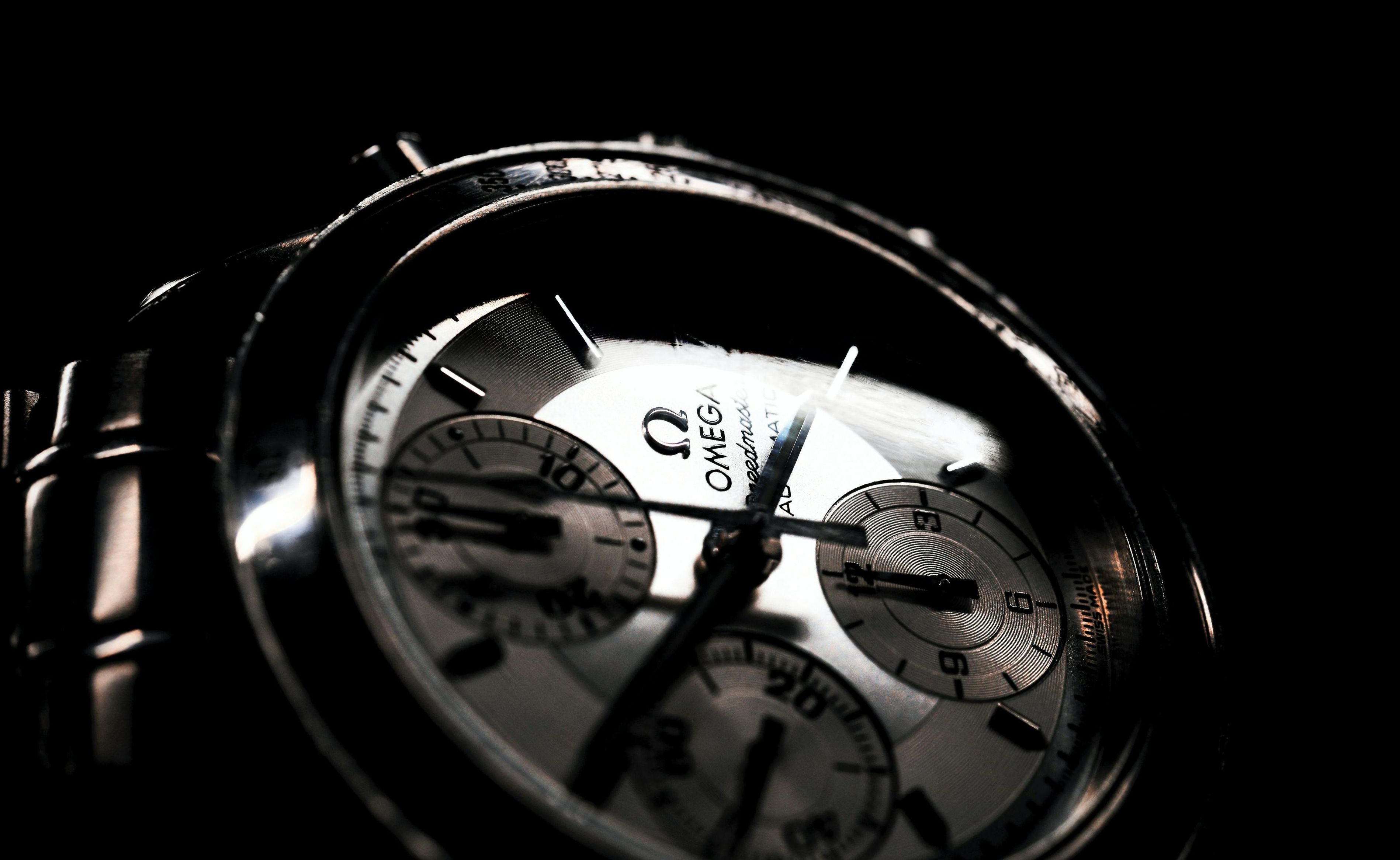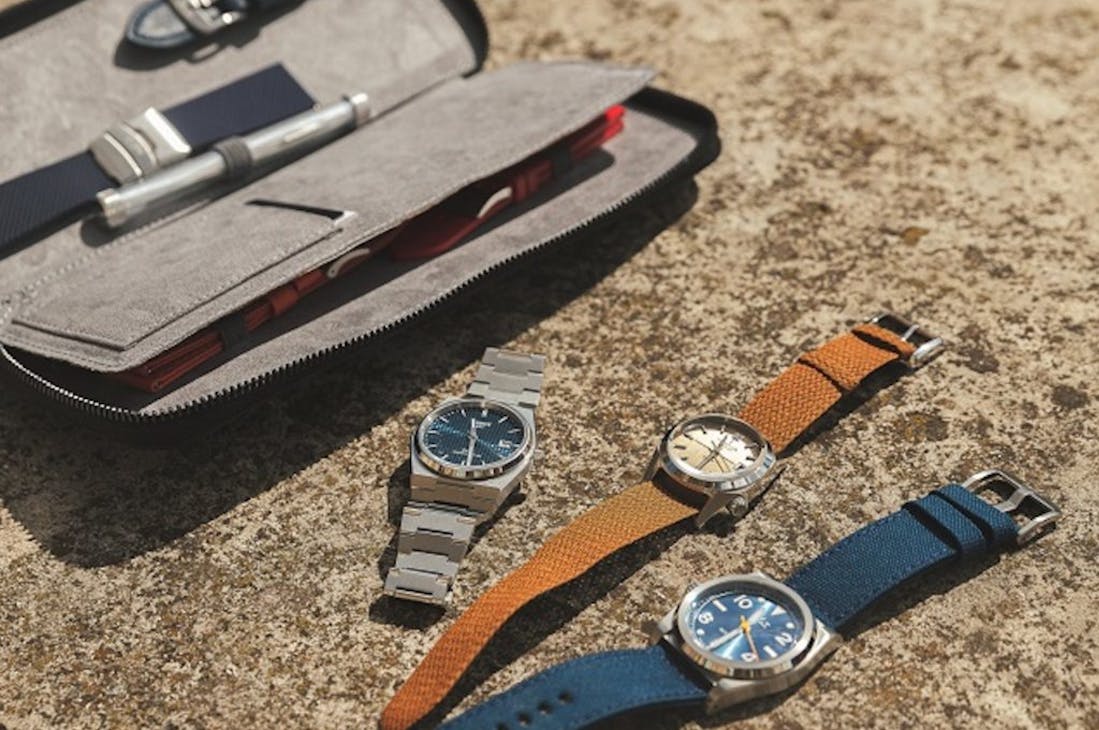I remember the times spent with my family with affection: it was my parents who really gave me a taste for history and also a taste for the beautiful things of their time.
I can say that my father passed on to me this fascination for the 50s, 60s and 70s. We devoured films from that era together. These in turn gave me a taste for this beautiful and particular aesthetic.
See Gregory Peck in the 1956 film The man in the gray flannel suit or Georges Peppard in the 1968 film House of Cards or The Man from Rio (1964) or The Tribulations of a Chinese Man in China (1965) with our immense Jean-Paul Belmondo, not to mention the series Amicalement Vôtre ( The Persuaders , 1971) with Tony Curtis and Roger Moore… These period films and series represented and still represent in my eyes a form of ideal in style.
The shape matched the background, the container matched the contents to highlight the best of these decades. If my father gave me these references as an inheritance, my mother took me with her to the sales rooms: I discovered objects from the past with a curious eye, we visited the galleries and the auctions together. I can say that she taught me to observe and discover what beautiful objects were. She left me with a taste for hidden beauties.

Perfect example of hidden beauty: a magnificent vintage Zenith World Timer with its original bracelet in competition condition. Photo taken at Antoine de Macedo’s rue Madame in Paris
And then one day, I myself developed a passion for watches and for models from the past in particular. Many years later, I understood what had won me over about them. This is the subject of this article: not the story of a speculation but the reasons for a passion.
I have a passion for vintage watches. I never tire of discovering new gems and especially those from the past. For me, nothing is worse than messing with the past. I am well aware that in many respects we live in an era which favors the instantaneous to the detriment of looking from above, the hyperpresent to the detriment of the past.
I don't neglect the present, I'm interested in the future but, by God, how much I love appreciating the beauties of the past! I contemplate the work of our predecessors, the fruit of their work continues to seduce decades later, so we must salute their efforts and the beauties they have bequeathed to us.
But, in our current environment, what is the point of bringing out watch pieces that date back more than half a century? The world has changed since then. For good and for bad. Many codes have been disrupted: stylistic and dress codes among others, so why is it relevant to return to old tocantes on the wrist in our time?

Superb Geneva Lip "Top Time" from the 1960s, born from an agreement between Breitling and Lip.
BECAUSE HISTORY IS A CYCLE
If the world of fashion often observes very short cycles, that of watchmaking observes longer cycles in comparison. An example: after experiencing a peak in the 1960s, the 1970s saw the upheaval of watchmaking with the massive arrival of quartz.
Beautiful mechanics were practically consigned to oblivion for two decades of the dominance of batteries… Then, the 90s saw the gradual return of mechanical watches until they once again took center stage.
Another example with the diameters of wristwatches: the long trend was from the beginning of the 20th century until the beginning of the 2010s towards ever larger diameters. Wristwatches have gone from 30mm in diameter to 47mm.
Then, from the 2010s, this trend was reversed. Gone is the era of ever more imposing watches, the era is 38-39mm. This is still larger than the 34-35mm of the 60s, that said in passing, but nevertheless the current diameters have come much closer to the old standards, at least to those of the end of the 60s.

Sublime Omega Constellation from the early 60s nicknamed "Pie Pan" for the shape of its dial. It is 35mm in diameter of pure beauty: one of the most sought-after pieces in vintage. Here, it is mounted with its original bracelet, another rarity because often gold bracelets from this period were resold to be melted down... Photo taken at Antoine de Macedo in Paris
At the beginning of the 2010s, I still saw fashion magazines talking about "feminine" diameters, evoking 36mm for example... would they say the same kind of nonsense today when fashion has returned to more contained diameters or simply less excessive than the 47mm reached by certain models from famous brands?
For my part, I have never been seduced by these comments on the diameters on paper which have little value in reality and I have always recommended trying the models regardless of the displayed diameters of the watches to be realize that the diameter matters little - relatively speaking, extreme cases should be avoided - when trying on.
Personally, I wear vintage watches of 34, 35, 36 or 37mm which appear significantly larger when worn due to the others
The fact remains that vintage watches are coming back even more into the news with proportions which are getting closer , through a reversal of trends, to our current standards. But, beyond the fashion cycle, there is an even more important element: the seductive power of the great watchmaking classics.
WATCHMAKING CLASSICS

The very beautiful Universal Genève Polerouter: a perfect example of the classic beauty of watch pieces from this era. Photo taken at Antoine de Macedo in Paris
In art, there are numerous trends which have in turn dominated a period. There is, among other things, a classical and neo-classical movement. “Classical” art is an art which draws its inspiration from the Greco-Roman era or at least from the vision that men of the 17th century had of antiquity. This classical art would later return in force in the 19th century with the so-called “neo-classical” movement.
In watchmaking, “classic art” if I may allow myself a comparison, is mainly the period from the 1950s to the mid-1970s .
It is precisely at this time that the great classics were designed. From the Speedmaster chronograph from Omega to the Submariner from Rolex via the Legend Diver from Longines, the Navitimer chronograph from Breitling or the Royal Oak from Audemars Piguet and the Nautilus from Patek Philippe.
The list of reference models of watch brands emanating from this era is very long but they all have in common that they have imposed reference models which are still very present today, if not dominant.
Even today, these models represent canons of watchmaking beauty: the design, the proportions, the harmony between all these assembled elements which are a case, a dial, hands, a glass, a movement, a caseback. box, a bracelet, a crown... is such that these watches continue to seduce today.

An exceptional piece: a Patek Philippe which wonderfully illustrates the brand's mastery in watchmaking complications. Photo taken at Antoine de Macedo in Paris
Moreover, the seduction capital of these period watches is such that the vast majority of brands have started for years to reissue these models or at least to offer reinterpretations which more or less preserve the dimensions of the era with a simple update of the movement equipping them.
The vintage market has literally exploded in the face of the success of these references and the prices of the most famous models have reached peaks that leave one dreaming, especially if we know that these models
What constitutes the strength of this seduction which transcends generations is quite simply the result of the work of watchmakers and designers who achieved their goal at the time. We must salute the work of our elders because they have been remarkably successful in producing very, very beautiful pieces.
And it is the beauty of these pieces that is timeless and continues to speak to us even today, more than 50 years after they were designed.

Omega chronograph from the 1940s. Yes, it seems incredible because the watch has very current proportions but it is in fact what we call in vintage a "jumbo" or "oversize" model designed in dimensions superior compared to the standards of the time. Photo taken at Antoine de Macedo in Paris
Apart from the aesthetic interest in these pieces, there is also another element to take into account: these watches are representatives of an era which had achieved a form of almost perfect balance between, if I may say so, the form and content.
THE PERFECT BALANCE BETWEEN CONTAINER AND CONTENT
The current era is rich in innovations but in my opinion it is a little unbalanced. On the one hand we have an entry and a mid-range which fit together movements, either Asian for the first, or Swiss for the second.
These movements are made to be mass industrializable and reliable. Then there is the high-end and luxury with models that can be innovative in terms of the calibers used. High-end movements are often beautiful to look at, perhaps even more so than those of the past - in some ways.
If watchmaking news is not left out and brands remain at the forefront of innovation, something seems to be missing in my opinion. I often see current watches as technical successes, but very often I can find it difficult to get excited about all the new things.
Maybe that’s even why I reasonably stay away from the buzz of big launches. I see a lot of models which, when worn, give me a result that leaves me quite cold.
Everything seems mastered, each element seems impeccable but something is missing... Perhaps this is why I tend to prefer certain period models over current models.

A great classic: a Submariner 5513 from 1983. It should be remembered that Rolex, before becoming a luxury brand, was a brand which forged its reputation through models truly made for men who needed solid watches, precise, reliable, ready to live with them in their daily life. Also, rare are the period models that have remained in competition condition like this example. Photo taken at Antoine de Macedo in Paris
Moreover, in the past, there was less fuss over the calibers now called "manufactured": many brands produced their own calibers and many of these same brands fitted other calibers from companies specializing in this domain.
If Omega designed and produced its own calibers like the 56X series to give just one example, the brand used a caliber
Today, to have an “in-house caliber”, you must have very strong backbones to design and produce it without risking the mistakes of Pequignet who needed several recapitalizations and takeovers to largely assume the costs of development and reliability of its Caliber Royal.

A historical and military example: a Breguet Type XX from the 1960s, one of the rare models to have equipped French naval pilots, its previous owner was thus really a former pilot on one of the two French aircraft carriers of the time. But did you know that these rare models were equipped with Valjoux 7730 calibers? Some of the most beautiful pieces fitted movements not “manufactured” by the brands themselves
In all respects, we must see this blessed period of watchmaking as being an achievement itself being the result of a conjunction of the stars with a period synonymous with intellectual ferment, creativity, innovations and competition. very healthy between brands which gave the best of themselves to attract customers by innovating and seeking to do better than their competitors in the field of products which were also positioned mainly in the same segment with relatively low prices. comparable.
Not necessarily cheap but with prices that didn't tend towards the extremes we know today either.
But we see that through all the qualities of the watches of this era emerge the outlines of something larger which goes beyond the beauty of the designs and the mechanical mastery: the fascination exerted by a whole period of our common history as well as its transmission.
THE TRANSMISSION OF A SUBLIMATE PAST
It's one thing to be nostalgic by watching films and series from or inspired by that period and it's another thing to exhaust the history books and hear the first-hand testimony of the people who lived this time.
It is not a simple coincidence to see watchmaking reaching its golden age at the same time and to see a prosperous society – without being ideal on all levels – confident in itself and in the idea that it progress was being made.
Personally, I think that the fascination exerted by watches from this era is closely linked with the fascination exercised by this period as a whole . Wearing a watch from this era is also a bit like wearing this period on our wrist. We then touch on a major idea: that of transmission between generations .

With the Hamilton Titan from the 1960s, we are touching on a watch that belonged to a trend that I consider sensational in the history of the American brand: watches influenced by the space age. The designs are bolder compared to many Swiss brands of the time while remaining in excellent taste
When I wear a period watch, I think (a little) of what our predecessors were able to experience and know in their time, I taste a little of their vision of the world but also of the things of their daily life. When I wear an Omega Seamaster DeVille or a Hamilton Titan or a Zenith Defy or a Lip Genève Chronograph, I don't imagine myself as Grégory Peck, Roger Moore or Jean-Paul Belmondo.
On the other hand, I am happy to wear a very small piece of history on my wrist and I contribute in my very small way to the transmission of this history: that of our fathers and our grandfathers, of those who preceded us.
Why wear vintage watches? I would say for a triple pleasure: for the beauty of these watches , for the period that they embody and also to transmit in turn the symbolism and aesthetics of what was best about the men of that era .
As I wrote in this article written in homage to someone who loved to tell pieces of history linked to watches, we need points of attachment to attach us to memories, our watches serve as vehicles of our memories, the mechanical watch is perhaps the only bequeathed element that we can continue to wear on a daily basis and therefore allow us to connect more easily to our beautiful memories or at least to the memories of those who preceded us. Perhaps this is the real reason for the success of vintage watches.

Vacheron Constantin displaying a small seconds at 6 o'clock. An elegant three-hander: what if true beauty was hidden in the classic? Photo taken at Antoine de Macedo in Paris
I would like to have all the references present in this article but it was already a privilege to have been able to wear these magnificent and above all historical pieces. Very few knowledgeable collectors can boast of owning so many beautiful references, so I would like to thank Antoine de Macedo for allowing me to take photos of the superb collection of vintage watches in his boutique at 28 rue Madame in Paris in the 6th arrondissement.






